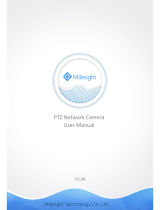
CONTENTS
1. SAFETY PRECAUTIONS. ............................................................................................................................... 3
2. PRODUCT DESCRIPTION ..............................................................................................................................5
2.1 Overview ............................................................................................................................................... 5
2.2 Interface Description .............................................................................................................................6
3. WIRING AND INSTALLATION ........................................................................................................................ 7
3.1 Nomenclature and Functions ............................................................................................................... 7
3.2 Handling Precautions ........................................................................................................................... 8
3.3 Installation Precautions ........................................................................................................................ 8
3.4 Installation .............................................................................................................................................9
3.5 Connections ........................................................................................................................................11
3.6 Reference dimension (unit: mm) .........................................................................................................12
4. WEB BROWSER SETUP .............................................................................................................................. 13
4.1 Accessing the web page .................................................................................................................... 13
4.2 Network Setting .................................................................................................................................. 14
4.3 Protocol Setting .................................................................................................................................. 15
4.4 Server Setting(SIP Protocol) ...............................................................................................................16
4.5 Server Setting (NAS Protocol) ............................................................................................................ 17
4.6 Audio Setting ...................................................................................................................................... 18
4.7 Audio File Setting ................................................................................................................................19
4.8 Priority Setting .................................................................................................................................... 19
4.9 Control Setting ....................................................................................................................................20
4.10 Multicast Setting ...............................................................................................................................21
4.11 Remote Control ................................................................................................................................ 22
4.12 Password Setting ..............................................................................................................................23
4.13 Language & Time ..............................................................................................................................23
4.14 Update firmware ............................................................................................................................... 24
4.15 Factory Reset ....................................................................................................................................25
4.16 Reboot .............................................................................................................................................. 25
4.17 System Logs ..................................................................................................................................... 26
5. AUDIO FILE UPLOAD TOOL OPERATING INSTRUCTIONS ....................................................................... 27
5.1 Software Installation ........................................................................................................................... 27
5.2 Settings ...............................................................................................................................................27
5.3 Unit List ...............................................................................................................................................28
5.4 Task List ..............................................................................................................................................29
5.5 Update Firmware ................................................................................................................................ 32
5.6 Language ............................................................................................................................................ 34
5.7 Help .....................................................................................................................................................34
6. APPENDIX .....................................................................................................................................................35
6.1 Specifications ..................................................................................................................................... 35




















